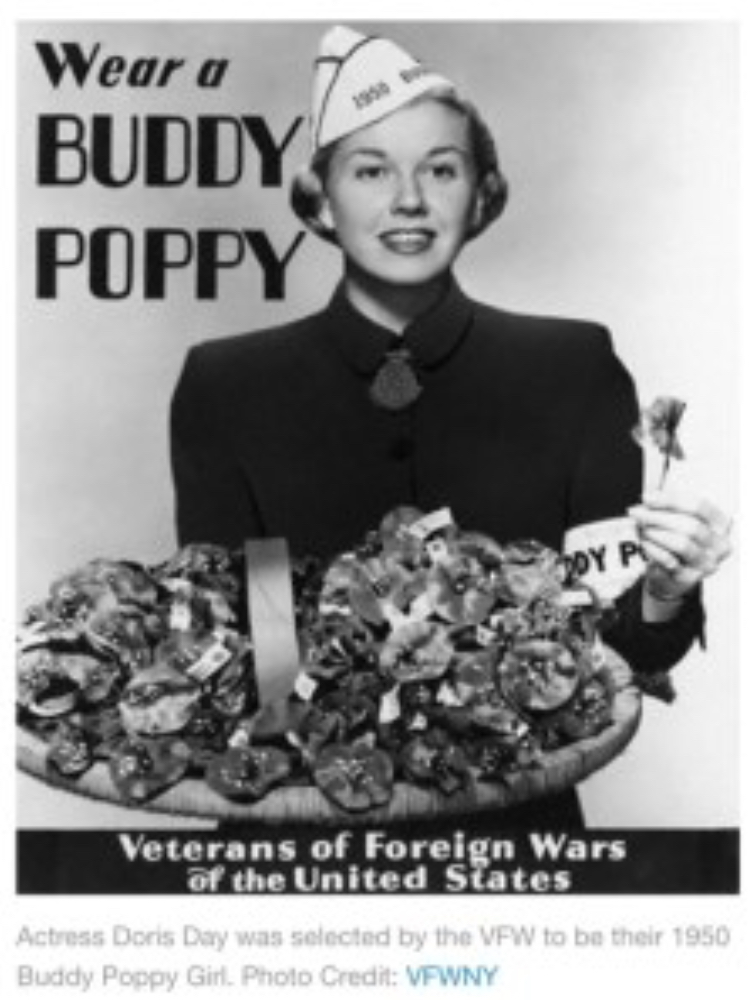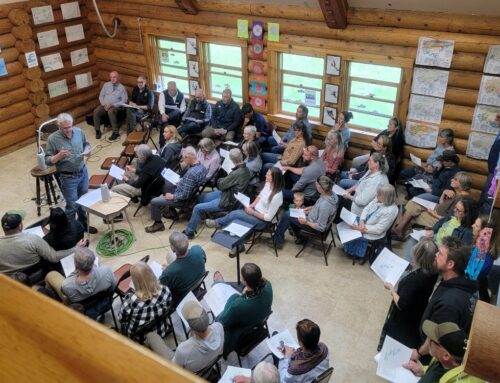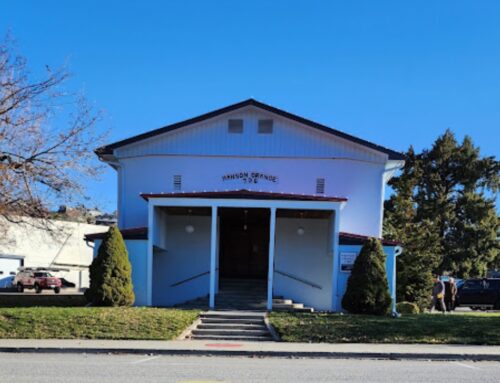This Year Marks the 100th Anniversary of the Cease Fire that ended WWI
Information and photos courtesy of VFW.org
On November 11th, 1918 at 11:00 a.m. (Paris time) the final shot was fired in World War 1. This year marks the 100th Anniversary of the cease fire that ended the bloodiest war in that generation.
Today you will see veterans and volunteers distributing the familiar red flower pins at the Chelan Post Office, Safeway, Chelan Market, and at Red Apple Market in Manson. But did you know the story behind the Buddy Poppy?
Story by Brian Wheat:
It all started in war-devastated France in World War I. The red poppy growing in Flanders Fields memorialized the deaths of American and Allied soldiers. Madame Anna E Guérin, founder of the American and French Children’s League, spoke at servicemen’s organizations and always requested the same thing: Please, whenever possible, wear a silk red poppy flower to honor the fallen.
In April of 1919, the “Poppy Lady,” as she was now known, arrived in the United States. She turned to the VFW in May 1922, and they conducted the first nationwide distribution of the poppies. In August 1922, they adopted the poppy as the official memorial flower of the VFW. The need for more poppies to distribute in 1923 started a business in which disabled and needy American veterans made and assembled the poppies in Pittsburgh, Pennsylvania. In remembrance of their buddies who never came back from the war, they started calling them, “Buddy Poppy” and the name stuck.
In February 1924, it was registered at the U.S. Patent Office. The VFW has made this trademark a guarantee that all poppies bearing that name, and the VFW label, are the work of bona fide disabled and in-need veterans. They are assembled in 11 locations throughout our nation. The funds raised benefit the VFW National Home and other veteran programs for the well being of our servicemen and servicewomen of all branches. Funds are also used for their dependents, widows and orphans of deceased veterans.
Today, with help from VFW’s and their members, that “Little Red Flower” continues to benefit the needy, just as the Poppy Lady believed it was capable of doing so many years ago. Annually, posts and auxiliaries — mostly around Veterans Day and Memorial Day — distribute some 14 million Buddy Poppies, but they are available at your local VFW posts year-round. They are handed out free in the memory of our heroes; donations are encouraged, appreciated and welcomed to continue the worthy cause. Let’s never forget their sacrifices.

A poem titled “In Flanders Fields” by Colonel John McCrae describes the scene of the time of war and the emotions of its actions, and honors those who paid the ultimate price to protect our freedoms.
The Buddy Poppy Program has helped the Veterans of Foreign Wars live up to its motto, “to honor the dead by helping the living.”
So next time, you see a Veteran handing out poppies, donate a few dollars to the cause, thank them and shake their hand.
That would also be a good time to share with them that you know the story and journey of the little red flower that came to us long ago to honor and memorialize our fallen heroes.
More Information about Veterans’ Day:
The Armistice of 11 November 1918 was the armistice that ended fighting on land, sea and air in World War I between the Allies and their opponent, Germany. Previous armistices had eliminated Bulgaria, the Ottoman Empire and the Austro-Hungarian Empire from the war. Also known as the Armistice of Compiègne from the place where it was signed, it came into force at 11 a.m. Paris time on 11 November 1918 (“the eleventh hour of the eleventh day of the eleventh month”) and marked a victory for the Allies and a complete defeat for Germany, although not formally a surrender.








